All about the circular economy
Learn all about how we can be more sustainable!
Currently, humans produce WAY too much waste. We make products, consume them and then chuck them away, littering our planet in the process. But what if there was a different way to do things?
LINEAR ECONOMY

In the natural world, there isn’t any rubbish or landfill. Energy is provided by the Sun, one species’ waste is another’s food and when things die, their nutrients return to the soil — in a circle of life. Unfortunately, humans do things in a more linear way…

When we want the latest phone or computer, we tend to bin the old one. When our dishwasher breaks, we buy a brand-new one. But this wasteful approach, known as the linear economy isn’t working! We’re running out of resources to make new things with, and we’re producing too much toxic waste.

That’s why we need to move to a circular economy, inspired by the natural world — where everything has value and nothing is wasted — like the diagram below illustrates.
CIRCULAR ECONOMY
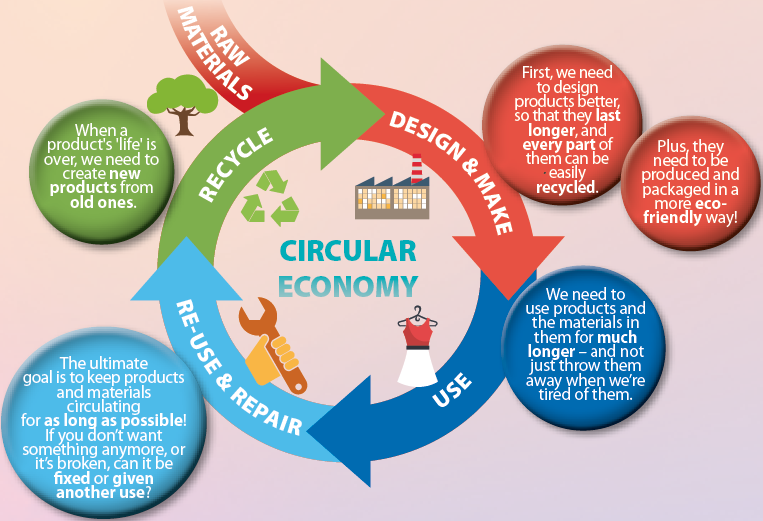
EXAMPLE!
In a circular economy, smart phones would be designed so they could be repaired more easily. And when they stopped working they would be simple to take apart so that the precious metals and materials inside them could be reused in another product, or returned safely to nature.
TRUE OR FALSE?
Are these claims about the circular economy real or rubbish? Test your friends and family!
INNOVATION IN ACTION!
MUSHROOM PACKAGING

Sounds bonkers, but a company called Ecovative Design has developed packaging made from the roots of mushrooms! These ‘mycelium’ act as glue, growing around woodchips or a mould to create sturdy plastic-free zero-waste packaging. Yay!
REPAIR CAFES
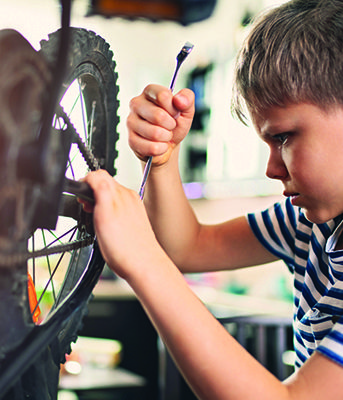
Instead of chucking away your broken things, why not fix them?! It can be much easier than you think! Repair Cafés all around the UK and Ireland provide tools, materials and advice to people who want to get mending, whether it’s furniture, bicycles, electrical appliances, clothes, crockery or toys. Find one near you at repaircafe.org/en/
NO-SO-FAST FASHION
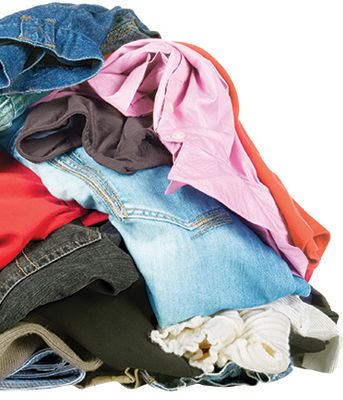
Have you heard about the problem with fast fashion? That’s when clothes are produced so cheaply that they’re often only worn a few times before being thrown away — adding to the world’s waste. But outdoor clothing manufacturer Patagonia is encouraging people to make their clothes last a lifetime. Their Worn Wear programme gives tips on fixing and waterproofing, and they offer free repairs.
SECONDHAND SHOPPING MALL
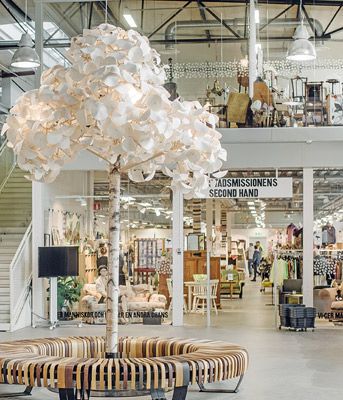
In Sweden, eco-friendly shoppers can visit the first ever second-hand shopping centre, ReTuna! Every store in the building sells only up-cycled vintage goods — from coats to chairs. Snap up a bargain and avoid waste! Trip to Sweden not on the cards? Then have a nose around your local charity shop!
FREECYCLE
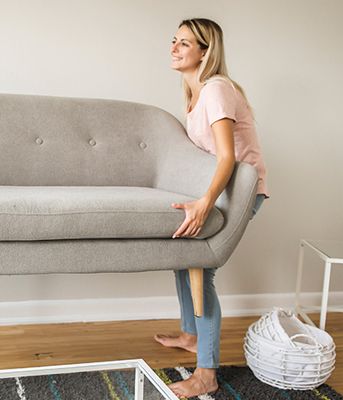
What if something’s not broken, but you just don’t want it any more? Well sign up to Freecycle! You can advertise the things you’re getting rid of — from furniture to bicycles — and someone local will pop round to pick it up and give it a loving new home. Aww!
ECO-FRIENDLY MATERIALS
In a circular economy, it’s important to think about how we make things and the materials we use to make them. That’s where Covestro comes in. They’re inventing new materials made from waste carbon dioxide (CO2) in the air that reduce the amount of fossil fuel you need to make things like foam mattresses or textiles!
CHEMIST CHAT!

Hi Persefoni! You’re a scientist at a company called Covestro. First up, can you explain to our readers what your job involves?
Hi Nat Geo KiDS, I work as part of a team that’s looking for new ways to develop environmentally friendly plastic materials. Our main idea is to use carbon dioxide (CO2) in our production processes. This was our dream for many years and it’s finally became reality!
Why is using CO2 such a good thing?
Well, to produce plastic materials you normally need crude oil, which is a natural resource. But with our new technology we use CO2 instead — which is normally considered a waste product. This reduces the amount of crude oil used in the production by up to 20%. So we preserve natural resources and turn something that was considered as waste into something useful.
Great news! So what do you make from it?
The new material that we’ve invented is called cardyon®. One of the many things it is used for is flexible foams, which are used in mattresses. It can also be used to make an adhesive which is in elastic sports floors.
Are there other things it may be used for in the future?
We’re currently investigating using it for elastic textile fibres, which could be used to make colourful socks or medical textiles, like bandages.
So how does this all relate to the circular economy?
cardyon® contributes to the circular economy by taking what would have been an industrial waste gas, and turning it into a new and useful raw material. By doing this, we are recycling, reusing and remanufacturing to reduce input and waste!
COOL COVESTRO COMP
We want you to design a poster that celebrates the circular economy and shows step-by-step how to upcycle something that might otherwise be thrown away!
The best entry will win and incredible £250 gift card to spend at the toy store The Entertainer. There is absolutely loads to choose from, including games and puzzles you can play again and again, educational and electronic toys, arts and crafts, and much more!
Click here to find out how to enter!

This competition is run in partnership with Covestro. Find out all about plastic here.
More Like General Science
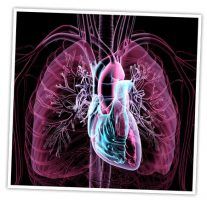
15 Facts About The Human Body!
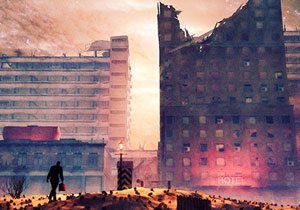
7 steps to surviving an apocalypse (according to science!)
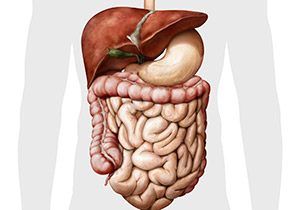
Human digestive system
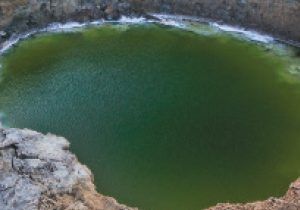








LEAVE A COMMENT
THANK YOU
Your comment will be checked and approved shortly.
WELL DONE,
YOUR COMMENT
HAS BEEN ADDED!
COMMENTS
Cool
cool
I love my after life can you people stop messing with my tomb
CUSTOMIZE YOUR AVATAR